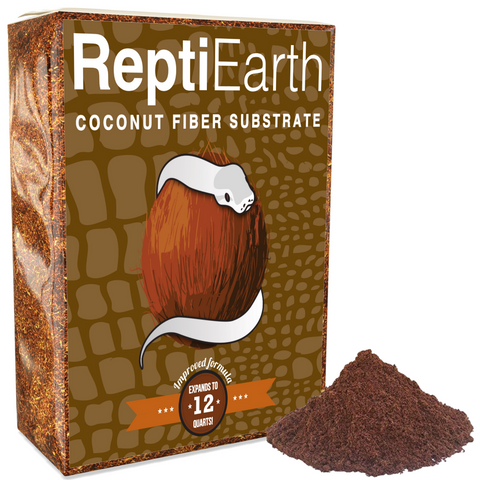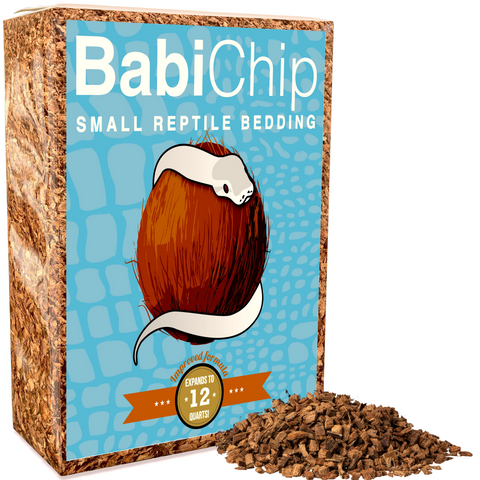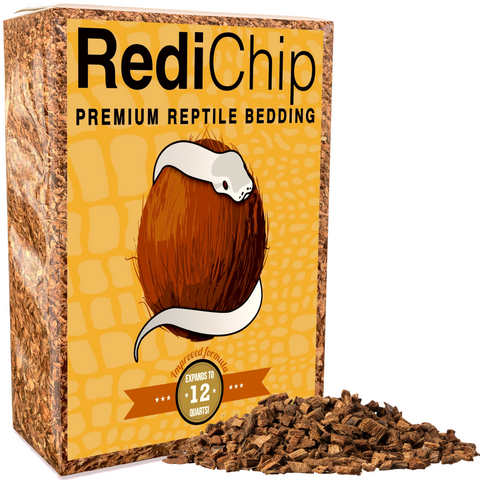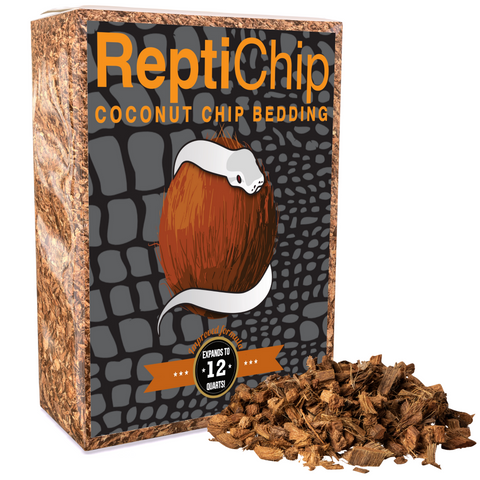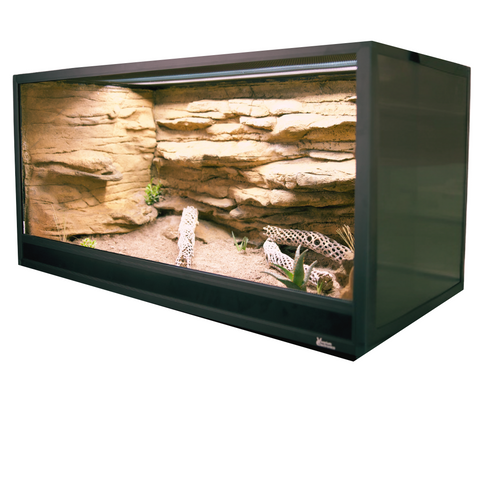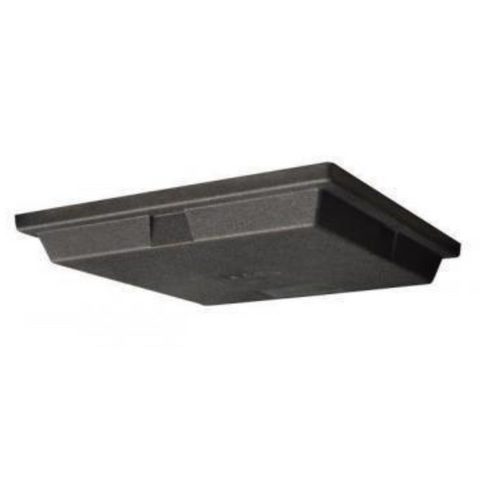Natural History
The Russian ratsnake is a non-venomous colubrid native to temperate forests, grasslands, and rocky hillsides across parts of Eastern Europe and Asia. Known for its impressive size and strikingly patterned scales, this species follows a typical life cycle for large constrictor snakes, progressing from a hatchling phase to adulthood over several years. Hatchlings emerge from eggs laid by the female, measuring approximately 12 to 15 inches in length at birth. Growth is relatively rapid during the first few years, with juveniles shedding frequently as they outgrow their skin. They reach sexual maturity around two to four years of age, at which point their size can range between four and six feet, with some exceptional individuals exceeding seven feet. Mating typically occurs in spring after a period of brumation (a form of cold-weather dormancy similar to hibernation). Females lay clutches of 5 to 25 eggs in warm, concealed areas such as rotting logs or underground burrows. These eggs incubate for approximately 55 to 70 days before hatching, with no further parental care provided beyond egg deposition.
This species exhibits complex behaviors that reflect its role as an active and highly capable predator. Russian ratsnakes are primarily diurnal, spending their days foraging for prey in a deliberate yet efficient manner. Unlike ambush predators, they actively track down meals, relying on a combination of visual and chemical cues detected through tongue-flicking and Jacobson’s organ analysis. Their diet in the wild consists of small mammals, birds, amphibians, and occasionally reptile eggs. Although non-venomous, they are strong constrictors, using their muscular coils to subdue struggling prey before consumption. When threatened, Russian ratsnakes display a range of defensive behaviors, from freezing motionless to avoid detection, to rapidly vibrating their tails in dry vegetation to mimic the warning signals of venomous species. If further provoked, they may inflate their bodies, lunge with open mouths, or emit loud hisses. Despite these defensive tactics, they are generally not aggressive and prefer to retreat when given the opportunity. Juveniles, in particular, are more prone to defensive displays, but this behavior typically diminishes with age and confidence.
As an essential component of their native ecosystems, Russian ratsnakes play a crucial role in controlling rodent populations, helping to maintain a balance between prey and predators. Their diet of small mammals helps regulate populations of potential agricultural pests, providing an important service to the ecosystems they inhabit. In turn, they are preyed upon by larger carnivores, including raptors, mustelids, and foxes, particularly when they are young and more vulnerable. Their adaptability and climbing prowess allow them to exploit various niches within their landscape, from forest canopies to rocky outcrops. They are skilled at maneuvering through trees and shrubs, often raiding bird nests or basking on sun-drenched branches. Their ability to thrive across varied terrain and temperature ranges reflects their ecological resilience. However, like many wild snakes, they face habitat loss and human persecution, as they are sometimes mistaken for more dangerous species. Understanding and appreciating their ecological contributions is vital for their conservation and the overall health of the ecosystems they inhabit.
Conservation Status
The Russian ratsnake is classified as Least Concern on the IUCN Red List, indicating that the species is not currently at significant risk of extinction. This classification suggests that populations are relatively stable in many parts of their range, and the species has a broad geographic distribution across Eastern Europe and parts of Asia. While declines have been noted in some regions due to habitat degradation and human activity, the overall population is not decreasing at a rate that would warrant a more threatened category. However, continued monitoring is necessary to ensure the species remains secure, particularly in localized areas where habitat fragmentation is more severe.
Despite its Least Concern status, the Russian ratsnake faces several threats that could impact its long-term survival. Habitat destruction due to agricultural expansion, urban development, and deforestation is one of the most significant risks. As forests and grasslands are converted for human use, populations become increasingly isolated, which can reduce genetic diversity and limit reproductive success. Additionally, wild individuals are sometimes collected for the pet trade, though this does not currently appear to be a major factor driving population declines. Road mortality is another important threat, as these snakes frequently cross roads in search of food or suitable habitats, leading to accidental deaths. Climate change may also pose future risks by altering temperature and precipitation patterns in ways that could impact prey availability and hibernation cycles.
Several conservation efforts have been implemented to ensure the long-term stability of the Russian ratsnake. In many parts of its range, this species is legally protected from overcollection, and habitat preservation initiatives have been established to safeguard its natural environment. Some populations occur within designated wildlife reserves, where human disturbances are minimized, and ecological conditions remain favorable for survival. Reintroduction programs and captive breeding efforts have been limited but could play a more significant role in genetic conservation if regional populations experience notable declines in the future. Public education initiatives also contribute to conservation by reducing human-snake conflict and promoting awareness of the species' ecological importance in controlling rodent populations. While the Russian ratsnake is not currently endangered, ongoing conservation measures will be crucial in maintaining viable populations and preventing future declines.
Native Range
The species is native to temperate regions of East Asia, with its range extending across Russia, northeastern China, the Korean Peninsula, and parts of Mongolia. It primarily inhabits the Amur River basin and surrounding areas, where it is found in both lowland and montane regions. Within Russia, it occurs in the Primorsky and Khabarovsk Krais, while in China, it is found in the Heilongjiang and Jilin provinces. The distribution is discontinuous, with populations often restricted to suitable habitat pockets due to deforestation and human activity. Though it occupies a relatively broad geographical range, its distribution remains patchy due to the specific environmental conditions it requires to thrive.
The species is most commonly associated with temperate deciduous and mixed forests, though it also occupies forest edges, shrublands, and grasslands. It prefers environments with a mix of tree cover and open space, offering opportunities for both concealment and basking. In addition to forested areas, it is frequently found in riparian zones near rivers and streams, where humidity and prey availability are higher. It is also known to inhabit agricultural landscapes, including abandoned farms and grasslands, particularly in regions where natural ecosystems have been fragmented. Within these macrohabitats, the species utilizes specific microhabitats such as dense undergrowth, fallen logs, rock crevices, and burrows of small mammals to seek shelter and regulate its body temperature.
The species is adapted to a temperate climate with distinct seasonal variations. Summer temperatures in its range typically reach 68–86°F, providing sufficient warmth for activity and digestion. During the winter, temperatures drop significantly, often falling below freezing, prompting the species to enter a state of brumation in underground burrows or other insulated retreats. Precipitation patterns vary across its range but generally consist of moderate rainfall, with wetter conditions in the warmer months. Humidity levels fluctuate depending on local conditions, with riparian zones maintaining higher moisture levels year-round. The ability to thrive in such varied climatic conditions demonstrates the species’ resilience, though it still remains dependent on access to suitable microhabitats for thermoregulation and shelter.
The elevation range of this species varies depending on the region. It is primarily found in lowland to mid-elevation habitats, occurring from sea level up to approximately 3,200 feet. In forested regions, it frequently occupies valley floors and hillsides, while in mountainous areas, it may be found in foothill zones where vegetation remains dense enough to provide adequate cover. The presence of water sources, particularly rivers and wetlands, plays a crucial role in habitat selection, as these areas offer both hydration and an abundance of prey species such as amphibians and rodents. Large fallen trees, hollow logs, and abandoned burrows are essential for shelter, providing refuge from predators and extreme weather conditions. The species also relies on a complex terrain that includes both open clearings for basking and shaded areas for retreat, enabling it to effectively regulate its body temperature throughout the changing seasons.
Behavior
The Russian ratsnake is a diurnal species, exhibiting peak activity during daylight hours. In the wild, it is highly active, often observed basking in the morning to raise its body temperature before engaging in foraging or exploratory behaviors. Seasonal variations significantly influence its activity patterns. During the warmer months of spring and summer, it is highly mobile, moving through forests, meadows, and agricultural areas in search of prey and mates. As winter approaches, it enters brumation, retreating to underground burrows, rock crevices, or other insulated areas to conserve energy until temperatures rise again. In captivity, this cycle can be replicated through controlled temperature and light adjustments, though some individual snakes may remain partially active in winter conditions.
This species is largely solitary, interacting with conspecifics primarily during mating season. Males may engage in non-violent dominance displays when competing for receptive females, intertwining their bodies and attempting to overpower each other physically. Despite this competitive behavior, Russian ratsnakes are generally non-aggressive towards one another outside of breeding encounters. Unlike some colubrids, they do not exhibit parental care; females lay eggs in concealed locations, relying on environmental conditions to incubate them naturally. Hatchlings emerge fully independent, possessing the necessary instincts to hunt and evade predators.
Environmental factors play a critical role in shaping the behavior of Russian ratsnakes. They are highly responsive to temperature gradients, moving between shaded and sunlit areas to regulate their body temperature. Humidity levels also influence behavior, particularly during shedding cycles, when they seek out moist substrates or water sources to facilitate the shedding process. Light cycles are crucial for maintaining proper circadian rhythms, with abrupt disruptions leading to stress or altered activity patterns. When confronted with potential threats, they rely on various defensive behaviors. These can include freezing in place, rapid escape maneuvers, or, if provoked, making loud hissing sounds while inflating their body to appear larger. Unlike some related species, they rarely resort to biting as a primary defense, generally preferring flight over confrontation.
A distinguishing behavioral trait of this species is its remarkable climbing ability. Even as adults, they are proficient at scaling trees, shrubs, and vertical surfaces, often using this skill to ambush prey or escape potential predators. In the wild, they exhibit opportunistic hunting behaviors, primarily preying on rodents, birds, and bird eggs. They use both active foraging and ambush strategies, relying on strong constriction to subdue their meals. Their keen eyesight and acute chemosensory abilities, utilizing their forked tongue and Jacobson’s organ, allow them to detect prey efficiently.
In captivity, Russian ratsnakes often display curious and exploratory behavior. Compared to their wild counterparts, they may exhibit reduced wariness towards humans, especially with consistent and gentle handling. However, inadequate enclosure space or a lack of environmental enrichment can lead to stress-related behaviors, such as excessive pacing or rubbing against enclosure walls. Compared to wild individuals, captive specimens may also show altered feeding patterns, sometimes accepting food more readily due to the predictable nature of feeding schedules. While generally docile when properly acclimated, some individuals may exhibit defensive or flighty responses if they feel threatened or are handled improperly. Providing sufficient climbing structures, varied hiding areas, and a diverse diet can help promote naturalistic behaviors and overall well-being in captivity.
Captivity Requirements
Enclosure design for this species should take into account its active, semi-arboreal nature and need for both climbing opportunities and ground space. For a juvenile, a secure enclosure measuring at least 20 gallons is sufficient, though they will quickly outgrow smaller spaces. For adult specimens, a larger enclosure is critical to accommodate their active lifestyle. A minimum enclosure size of 4’ x 2’ x 2’ is recommended, but a larger space, such as 6’ x 2’ x 2’, is ideal for promoting natural behaviors. Glass or PVC enclosures work well, with PVC offering superior heat retention and durability while glass provides better visibility. Screened ventilation on the top or sides should allow for airflow without compromising heat and humidity control.
The enclosure layout should include a mix of horizontal and vertical elements to support their climbing tendencies. Sturdy branches, wooden shelves, or climbing ledges should be positioned to allow for effective use of vertical space. Provide multiple hides, one on the cooler end and one on the warmer end, to help with thermoregulation and stress reduction. A secure, snug hide box promotes a sense of safety. Large cork bark pieces, artificial caves, or rock formations mimic natural shelters and should be integrated into the setup. The basking area should be positioned to allow the snake to access warmth easily, with a security barrier or overhang providing cover as needed. Escape prevention is essential, as this species is adept at finding weaknesses in an enclosure. Locking sliding doors, tight-fitting lids, or secure latches are highly recommended to prevent accidental escapes.
Proper lighting and heating are critical for this species’ health and activity levels. A daytime basking temperature of approximately 85-88°F should be maintained, with a cooler side of the enclosure around 72-75°F. The ambient temperature should remain between 75-80°F during the day, with a mild nighttime drop to 68-72°F to mimic natural temperature fluctuations. A heat source, such as an overhead basking lamp or heat panel, should be placed to create a gradient, allowing the snake to regulate its body temperature. Belly heat from an under-tank heating pad can be beneficial, but it should not be the sole heat source.
UVB lighting is not strictly required for this species but is highly beneficial. A low-intensity 5-7% UVB tube, such as a T5 linear fixture, can help with calcium metabolism and overall health. The UVB bulb should be mounted roughly 12-18 inches from the basking area, with a mesh barrier reducing direct exposure if necessary. A photoperiod of 12 hours of daylight and 12 hours of darkness is appropriate for most of the year. Seasonal adjustments, such as reducing the photoperiod slightly in winter, can encourage more natural behaviors, including potential brumation cues.
Choosing the appropriate substrate is important for maintaining a clean and naturalistic environment. A loose, moisture-retaining substrate that allows for burrowing is ideal. Aspen shavings, ReptiChip, or a mix of ReptiEarth provide a balance between humidity retention and ease of cleaning. Avoid overly dusty substrates, sand, or fine particulate materials that could lead to respiratory irritation. Spot-cleaning should be done frequently to prevent bacterial buildup, with a full substrate replacement occurring every few weeks depending on the enclosure’s bioactivity.
Enrichment is essential for keeping this species active and engaged. Providing climbing branches, hollow logs, and textured surfaces encourages exploration and exercise. Rotating enclosure décor, such as rearranging hides or adding safe, natural items like leaf litter, prevents monotony. Offering small tunnels or digging areas can allow for natural hiding and exploratory behaviors. Periodic exposure to safe outdoor enclosures or supervised handling sessions can further stimulate mental and physical activity, though handling should always be done in a calm and controlled manner.
Humidity levels should be maintained between 50-70%, with occasional increases around shedding periods to aid in successful ecdysis. Regular misting or using a humid hide with damp sphagnum moss can provide localized humidity without oversaturating the enclosure. A quality hygrometer should be used to monitor humidity accurately, as improper levels may cause respiratory or shedding issues. If higher humidity is needed, humidity-retaining substrates or partial enclosure covers on ventilated areas can help adjust levels effectively.
Hydration should be managed by providing a fresh, clean water bowl at all times, large enough for the snake to soak in if desired. This species may drink from standing water but also benefits from light misting, particularly if it exhibits interest in drinking droplets off surfaces. In drier environments, additional hydration methods such as increasing misting frequency or offering water-rich foods may be beneficial. Regularly replacing the water and disinfecting the bowl helps prevent bacterial growth and ensures consistent access to hydration.
Careful management of enclosure conditions, proper heating and lighting, and consistent hydration practices contribute to the long-term health and well-being of this species in captivity. Providing a structured environment with plenty of enrichment opportunities will ensure a physically and mentally thriving animal.
Diet & Supplementation
In the wild, this species is a non-venomous constrictor with a diet primarily composed of small mammals, birds, amphibians, and occasionally reptiles. It is an opportunistic predator that actively hunts rather than relying on ambush tactics. Using keen eyesight and an exceptional sense of smell, it locates prey by tracking chemical cues in the environment. It does not possess heat-sensitive pits like some other snakes but relies heavily on its tongue-flicking behavior and Jacobson’s organ to process scent information. Once prey is located, it is captured quickly and subdued using constriction, tightening its coils until the prey succumbs. Juveniles typically consume a higher proportion of amphibians and small lizards, while adults shift to a diet dominated by rodents and birds. Seasonal variations also influence diet; in cooler months, this species may rely on fewer, larger meals, while in warmer months with higher activity levels, feeding occurs more frequently.
In captivity, replicating the natural diet as closely as possible is essential to ensure health and longevity. The primary food source for captive individuals is readily available feeder rodents, such as mice and rats, which provide a similar nutritional profile to the small mammals consumed in the wild. However, to prevent nutritional deficiencies, occasional dietary variation is recommended. Supplementing with chicks or quail can help mimic the natural avian component of their diet, while offering amphibians on occasion may be beneficial for juvenile specimens. Unlike in the wild, captive diets should be carefully controlled to prevent overfeeding, which can lead to obesity, a common issue in this species due to its strong feeding response and willingness to eat whenever food is offered.
While captive individuals typically accept pre-killed prey without issue, some may initially show reluctance, especially when transitioning from wild-caught to captive feeding. In such cases, using scenting techniques—such as rubbing a new food item with an already accepted prey type—can help encourage feeding. Regularly varying prey items not only prevents food aversion but also stimulates natural foraging behavior. Captive feeding schedules should also mimic the natural feeding frequency: juveniles generally require smaller, more frequent meals (every 5–7 days), while adults can be fed less often (every 10–14 days) depending on metabolism and activity levels.
Several feeding challenges may arise in captivity. Some individuals may refuse food due to environmental stress, improper temperatures, or seasonal fasting tendencies, particularly in winter. Ensuring optimal enclosure conditions—such as proper temperature gradients, sufficient hiding spaces, and low stress levels—can help mitigate feeding issues. Another common issue is over-reliance on one prey type, which may lead to nutrient imbalances. For enrichment and to simulate natural hunting behaviors, prey items can be moved or "hidden" within the enclosure to encourage active searching. Additionally, some specimens may show hesitation to accept pre-killed food; in such cases, slight warming or movement of the prey using tongs can increase feeding response.
By understanding and mimicking the natural dietary habits of this species, keepers can ensure their health and longevity in captivity. A well-balanced feeding regimen, proper supplementation, and environmental enrichment all contribute to maintaining optimal nutrition and overall well-being.
Reproduction
Russian ratsnakes reach sexual maturity at approximately two to four years of age, with males typically maturing slightly earlier than females. This species exhibits mild sexual dimorphism, primarily in overall size, as females tend to grow larger and more robust than males. During the breeding season, males engage in active courtship behaviors that include tongue flicking, body alignment, and gentle nudging of the female. In some cases, males may exhibit competitive behaviors if multiple individuals are present, though this species is not highly aggressive compared to other colubrids. Mate selection appears to be influenced by the female’s receptiveness, as unwilling females may actively avoid or reject courting males.
Successful breeding of this species often requires specific environmental triggers to stimulate reproductive activity. In captivity, it is beneficial to provide a period of brumation, typically lasting two to three months, where temperatures are gradually reduced to around 55–60°F. This cooling period mimics natural seasonal changes and helps regulate reproductive cycles. Increasing the humidity slightly before and after brumation can signal the arrival of spring conditions, further encouraging breeding behavior. Gradually restoring temperatures and extending daytime light exposure post-brumation initiates activity, with courtship and copulation commonly occurring in the weeks that follow.
This species is oviparous, meaning it lays eggs rather than giving birth to live young. For successful copulation, it is recommended to introduce the male to the female’s enclosure during the active breeding season, typically in early spring. Russian ratsnakes generally tolerate cohabitation during this period, though careful observation is necessary to prevent stress-induced aggression or rejection. Providing multiple hiding areas and climbing structures can help create a more naturalistic environment where the animals feel secure. Once copulation occurs, the female will require a suitable nesting site to deposit her eggs. A humid nesting box filled with moist sphagnum moss or damp substrate mimicking natural forest floor conditions is ideal for egg-laying.
Despite their adaptability, several challenges can arise when breeding this species in captivity. Incompatibility between individuals is a primary issue; some pairs may simply refuse to mate, necessitating the introduction of a different partner. Additionally, improper environmental conditions, such as failure to provide a sufficient cooling period, can lead to reproductive inactivity. Stress, often caused by excessive handling, frequent disturbances, or an inadequate enclosure setup, may also contribute to unsuccessful breeding attempts. To maximize breeding success, maintain a stable and predictable environment, allow individuals ample time to acclimate to seasonal changes, and closely monitor interactions between potential mates. By addressing these factors, keepers can significantly improve the likelihood of successful reproduction in captive Russian ratsnakes.
Incubation & Neonate Care
The Russian ratsnake is an oviparous species, meaning it reproduces by laying eggs. Breeding typically occurs in the spring, and females will seek out secluded, humid locations to deposit their clutch. In captivity, it is essential to provide a suitable nesting box filled with a moist substrate such as sphagnum moss or damp vermiculite to ensure proper egg development. Clutch size generally ranges from 5 to 25 eggs, with larger, well-conditioned females producing higher numbers. Once laid, the eggs should be carefully removed and placed in an artificial incubator set to an appropriate temperature range to maximize hatching success.
The ideal incubation temperature falls between 78°F to 82°F, with a humidity level maintained at approximately 70–80%. Incubation duration varies depending on temperature, but under optimal conditions, hatching typically occurs after 55 to 70 days. Unlike some reptiles, this species does not exhibit temperature-dependent sex determination, meaning sex is genetically predetermined rather than influenced by incubation temperatures. The choice of incubation medium is critical, with slightly damp vermiculite or perlite being widely used due to their ability to retain moisture while allowing for adequate gas exchange. Eggs should not be rotated once laid, as this can disrupt embryonic development. Condensation accumulating on the eggs may indicate excessive humidity, which can lead to fungal growth or drowning of the developing embryos if not corrected.
Hatching occurs through the use of an egg tooth, a specialized structure on the snout that enables the neonates to slit the eggshell. The hatchlings may take several hours or even a day to fully emerge, often resting inside the egg after creating initial openings. It is advisable to leave them undisturbed during this period to allow them to complete the process at their own pace. Once all neonates have emerged, any remaining eggs should be examined to ensure that no viable individuals are struggling to hatch. Occasionally, weak individuals may require assistance, but such interventions should be done cautiously to avoid injuring the hatchling.
Neonate Russian ratsnakes should be housed separately or in small groups to minimize competition and stress. Each hatchling enclosure should be simple and easy to clean, with a paper towel or aspen substrate, a small hide, and a shallow water dish. The ambient temperature should be maintained around 75°F to 78°F, with a slightly warmer basking area reaching 82°F to 86°F. Proper hydration is critical for early shedding cycles, so a humidity level of 50–60% is recommended, with occasional misting if needed.
Feeding should commence once the hatchlings complete their first shed, which typically occurs within 7 to 10 days after hatching. They readily accept appropriately sized newborn or fuzzier mice, though some individuals may initially refuse food and require scenting techniques, such as rubbing the prey with a lizard or using live pinkies to stimulate feeding response. Hatchlings should be fed once every 5 to 7 days, ensuring steady growth without overfeeding. If persistent feeding issues occur, adjusting environmental conditions or trying alternative prey items may help.
Neonates should be handled minimally until they are well-established feeders to prevent undue stress. Russian ratsnake hatchlings can be defensive, often displaying rapid movements and strikes, but they typically calm down with gentle, consistent handling. Common health concerns in neonates include dehydration, retained sheds, and gastrointestinal issues if temperatures or husbandry conditions are inadequate. Monitoring growth, hydration, and feeding response closely in the first few months is critical for their long-term health and development.
Conclusion
By understanding the specific environmental, dietary, and behavioral needs of the Russian ratsnake, keepers can provide an optimal captive environment that supports both physical health and naturalistic behaviors. This species' adaptability and generally docile temperament make it a rewarding choice for experienced reptile enthusiasts, particularly those who can accommodate its large adult size and need for climbing structures. Providing a spacious enclosure, maintaining appropriate temperature and humidity levels, and offering dietary variety will promote overall welfare and long-term success in captivity.
While Russian ratsnakes are hardy and resilient, they still require attentive husbandry to thrive. Regular monitoring of their health, consistent maintenance of their habitat, and an understanding of their seasonal behaviors will help prevent common husbandry-related issues such as obesity, dehydration, and stress. Keepers should also remain mindful of their natural tendencies, including their strong feeding response and potential for escape if enclosures are not properly secured. Additionally, enrichment through varied enclosure décor and occasional handling can encourage mental stimulation and reduce stress.
Given the importance of conservation awareness, responsible reptile keepers should also recognize the ecological significance of this species in its natural habitat. Russian ratsnakes play a valuable role in controlling rodent populations and maintaining ecological balance, making their preservation within native ecosystems essential. Supporting ethical captive breeding programs and avoiding the purchase of wild-caught specimens helps ensure that the demand for this species does not negatively impact wild populations.
With proper care and attention to detail, Russian ratsnakes can live long and healthy lives in captivity, often exceeding 15 years with appropriate management. Their inquisitive nature, striking patterns, and impressive size make them a captivating species to observe and care for. By replicating their natural conditions and respecting their environmental and behavioral needs, keepers can foster a thriving, well-adjusted individual that benefits from a high standard of welfare.



